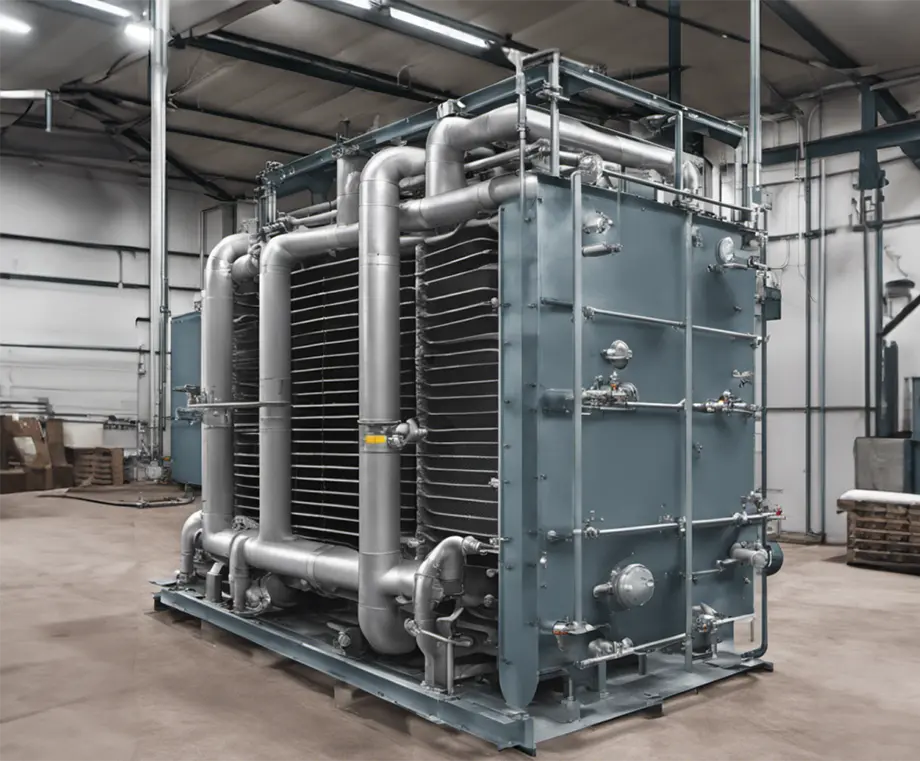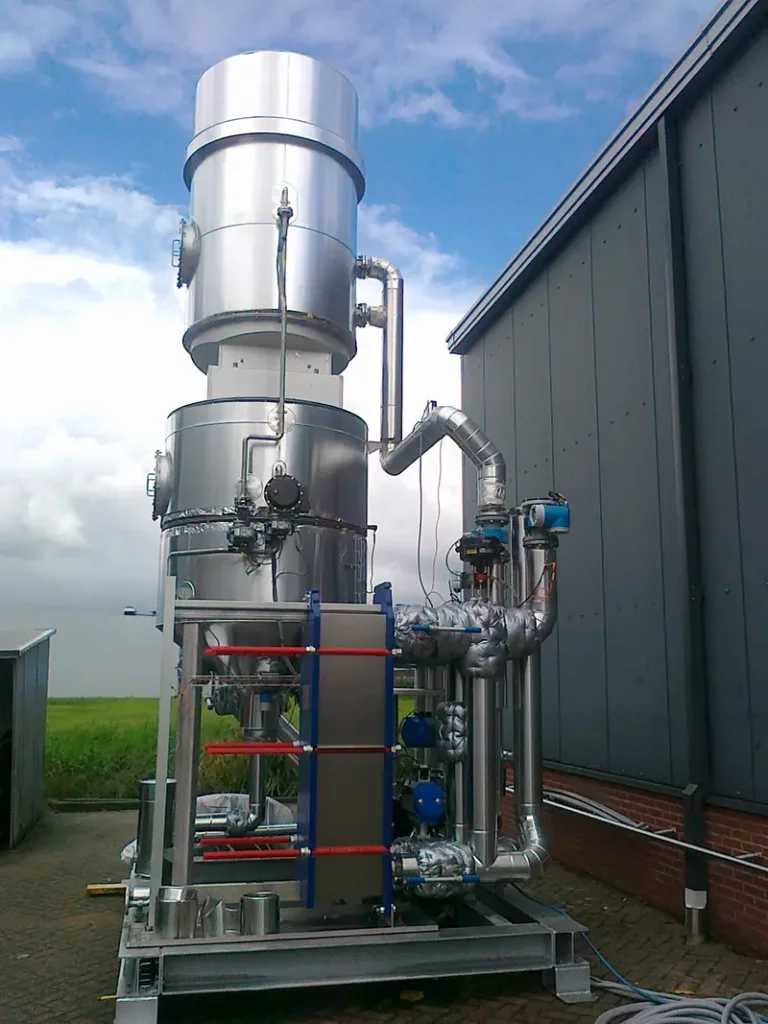Throughout human history, the practice of preserving various items, from furs and textiles to timber and grains, has relied on the timeless technique of hot air drying. This age-old preservation method has found application in diverse sectors across the globe, especially in the food industry. Astonishingly, both developed and developing nations allocate over one-third of their primary energy to industrial activities, with drying processes playing a prominent role.
In recent times, the spotlight has shifted towards the efficiency of heat pump drying within these industries. Surpassing expectations, this method has proven itself by providing more heat output than the energy input required by the compressor. These advancements mark a significant stride in optimizing energy consumption in industrial drying processes, showcasing the continual evolution of preservation techniques to meet the demands of a modern, energy-conscious world.
Table of Contents
How does drying work with a Heat Pump?
Drying, a crucial separation process, involves the removal of water or other solvents from solids or liquids by applying heat. This method holds particular significance in various industries, especially in food production industry and agriculture.
In many countries heavily involved in agriculture, substantial quantities of food products undergo drying processes to enhance shelf life, reduce packaging costs, decrease shipping weights, improve appearance, encapsulate original flavor, and maintain nutritional value. The primary goal is to eliminate moisture, preventing the growth of bacteria, yeast, and mold that could spoil the food.
An industrial dryer is a powerful device specifically designed to extract moisture from a wide range of materials, mixtures, and food products. These sizable pieces of equipment have the capacity to handle high volumes of products, and traditionally, they use steam generated by boilers. These boilers commonly rely on gas for heating water to steam.
An example for implementing a heat pump in the drying process could be a mechanism that involves extracting air from a waste heat source. This air is then transferred through a heat exchanger to a heat pump, which upgrades the waste heat to the desired temperature.
The resulting upgraded waste heat can be effectively utilized to facilitate the drying of the chosen product. This innovative approach not only offers energy efficiency but also aligns with the broader goals of sustainability in industrial processes.

What are the benefits of replacing Gas Boilers with Heat Pumps?
For starters you cannot directly replace a gas boiler with a heat pump. As a heat pump does not produce heat on its own. The Heat pump will need a heat source (waste heat) which it can upgrade to a higher temperature. A gas boiler can create heat on its own.
With these basic principles set there are some other things that need to be considered as well. Because when swapping out a gas boiler for a heat pump in an industrial setting. There are a set of advantages and drawbacks. Let’s break down the pros and cons:
Pros:
- Environmental Friendliness: One of the most significant advantages is the environmental impact. Heat pumps are known for their lower carbon emissions compared to gas boilers, contributing to a greener and more sustainable industrial operation. With the assumption that the used electricity is green.
- Energy Efficiency: Heat pumps are generally more energy-efficient, as they transfer heat from the air or ground rather than generating it directly. This can result in reduced energy consumption and lower operational costs over time.
- Long-term Cost Savings: While the initial investment in a heat pump system may be higher, the long-term operational costs can be lower due to energy savings and potential government incentives for adopting eco-friendly technologies.
- Versatility: Heat pumps can provide both heating and cooling, offering a versatile solution for industrial processes that may require temperature control throughout the year.
Cons:
- Initial Cost: The upfront cost of installing a heat pump system is often higher than that of a gas boiler. This initial investment can be a barrier for some industrial facilities, especially if budgets are tight.
- Temperature Limitations: Heat pumps may not be suitable for processes requiring > 100 degrees. In such cases, additional tuning and refrigerant selection need to be made. Adding complexity and potentially reducing overall efficiency. Although research is being done on High Temperature Heat pumps, these are still in the works.
- Poor control for Fluctuating demand: Heat pumps experience a delay in responding to temperature increases during periods of fluctuating demand, as they cannot increase temperature immediately like gas boilers can.
- Dependency on External Conditions: The performance of for example an air-source heat pumps, can be affected by external factors such as ambient temperature. Extremely cold climates might reduce their efficiency, making them less suitable in certain geographic locations.
- Maintenance Complexity: Heat pump systems can be more complex and may require specialized maintenance compared to traditional gas boilers. This could lead to higher maintenance costs or the need for skilled technicians.
In considering the switch from a gas boiler to a heat pump, it’s crucial for industrial facilities to weigh these pros and cons based on their specific needs, processes, and long-term goals.
JOA Air Solutions, with its expertise in providing tailored solutions, can assist in evaluating the feasibility and benefits of such a transition for a particular industrial setting.
| Gas Boiler | Heat Pump |
|---|---|
| Pros | Pros |
| Can keep up with high demand | Works energy efficient when demand is constant |
| Can be turned down to keep up with low demand | Low carbon emission |
| Gas Boiler | Heat Pump |
|---|---|
| Cons | Cons |
| Relatively High power consumption | Not highly adjustable with fluctuating demand |
| High CO2 emissions | High initial cost |
| Added complexity with >100 temperatures | |
The need for Electrification of Food Dryers
Heat pumps have emerged as a sustainable alternative, offering the dual benefits of reducing carbon emissions and lowering energy consumption. By utilizing the principles of thermodynamics, these systems efficiently transfer heat from the ambient air or from a waste heat resource to the drying process in food production, minimizing the reliance on conventional energy sources, like gas. This not only aligns with emission reduction goals but also contributes to the overall sustainability of industrial operations.
Why is adaptation of Heat pumps lacking behind in drying processes?
The slower adoption of heat pumps in drying processes can be attributed to various factors. Firstly, the initial investment required for installing heat pump systems tends to be higher compared to traditional drying methods, creating a financial barrier for some industries.
Additionally, limited awareness of the benefits and potential energy savings of heat pump technology, coupled with a resistance to change and a reliance on proven technologies, contributes to the hesitancy in adoption.
Some industrial drying processes also demand high temperatures that traditional heat pumps may struggle to achieve efficiently, further limiting their suitability.
Technical challenges, perceived complexity, and a lack of clear regulatory support or incentives are additional hurdles that hinder the widespread adaptation of heat pumps in industrial drying operations.
If you want to find out what opportunities you could utilize with a heat pump, please contact us. We’ll guide you through the possibilities tailored to your specific scenario, providing a comprehensive overview of all the available options.


